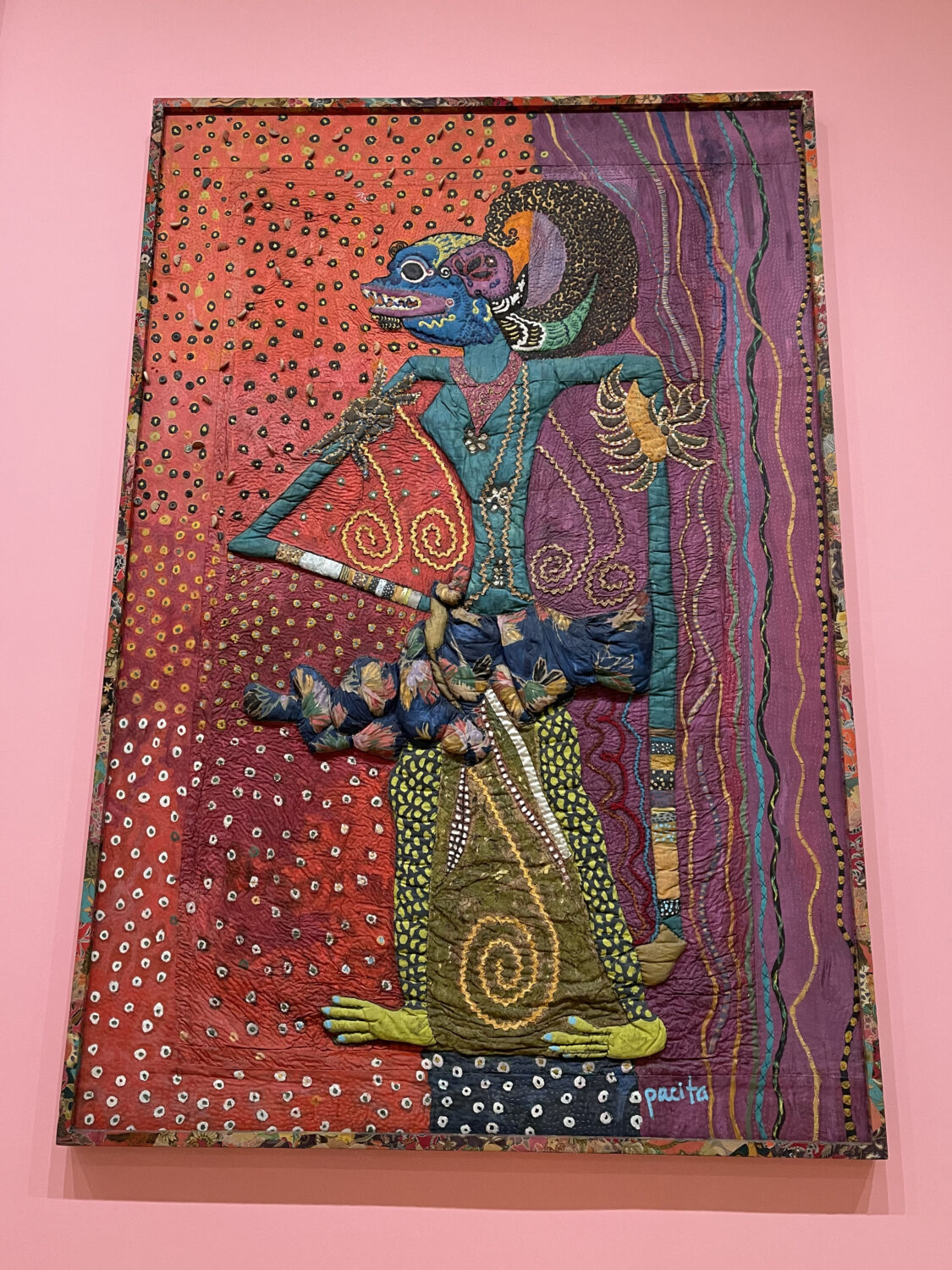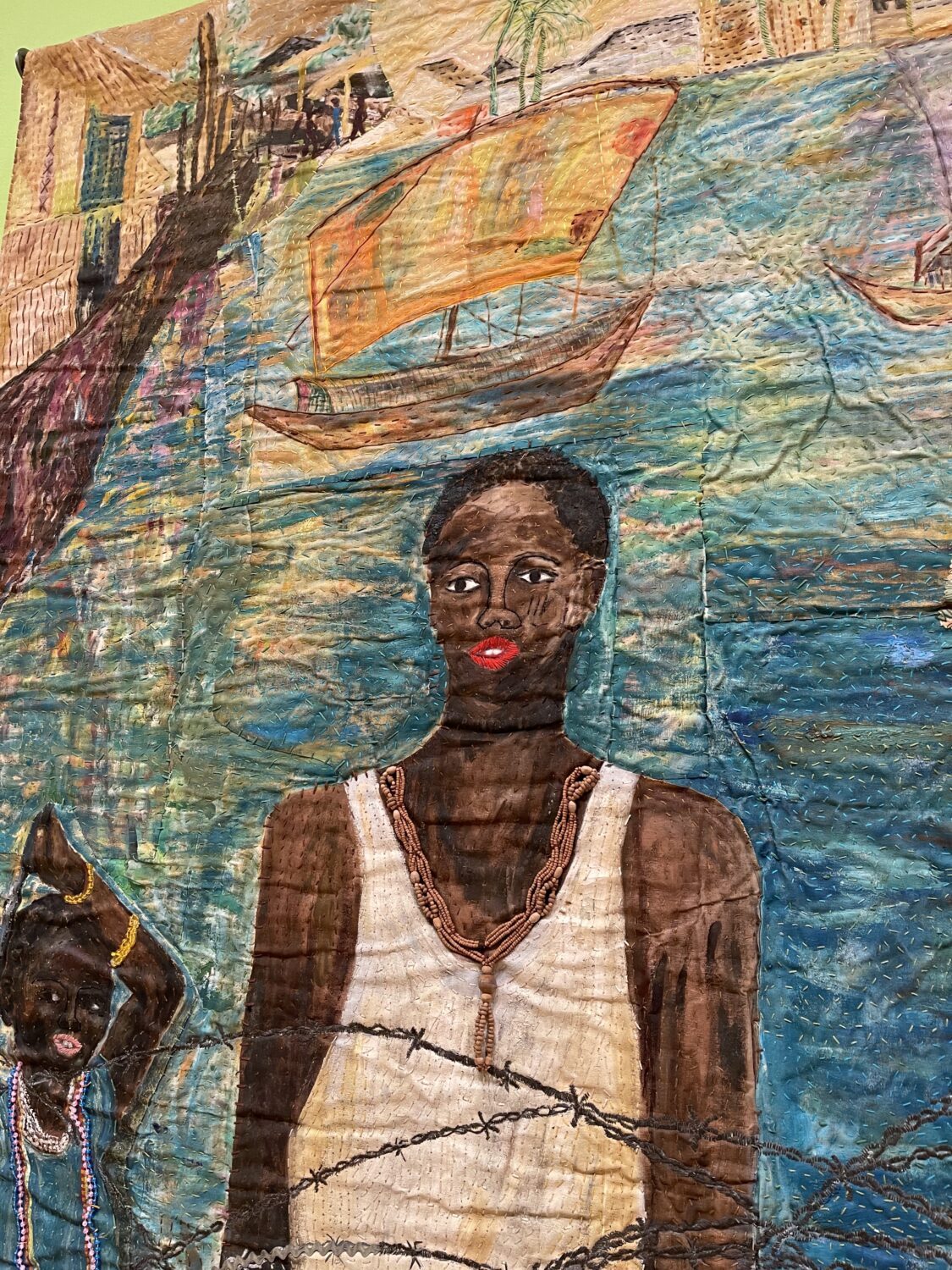Political Activism and Indigenous Crafts Meet in the Practice of Pacita Abad
By Keshav AnandMostly self-taught, Filipino-American artist Pacita Abad is best known for her trapuntos, quilted paintings made by stitching and stuffing her canvases. After moving to the United States in 1970 to escape political persecution from the authoritarian Marcos regime, Abad sought to give visibility to political refugees and oppressed peoples through her work.
Born in Batanes, the northernmost province of the Philippines, in 1946, from an early age, Abad was deeply influenced by her family’s involvement in politics. Following their outspoken opposition of the Marcos regime, the Abad family home in Manila became a target of violence and in one event was even gunned. After the incident, a young Abad was encouraged by her parents to leave the country for her own safety.

She had plans to complete a law degree, which she’d already started in the Philippines, in Madrid. But then Abad’s journey took a transformative detour. She decided to visit relatives in San Francisco en route to Europe, and there she became enthralled by the city’s progressive milieu and thriving countercultures.
While in the Bay Area, Abad spent a great deal of time with communities of Asian and Latin American immigrants who had fled their homelands due to economic and socio-political challenges. She immersed herself in the vibrant local art scene while pursuing a masters degree in history at Lone Mountain College, now a part of the University of San Francisco, where she also worked as the Coordinator of Cultural Affairs.
Although she earned a scholarship to attend law school at UC Berkeley, Abad chose to forgo it in favour of travel and research, channelling her interest in advocacy through her art. She and her husband, Jack Garrity, travelled extensively due to his job as a development economist. This nomadic lifestyle greatly influenced Abad’s outlook on art. Non-hierarchal and embracing of craft, her evolving practice encompassed various forms, materials, and visual traditions.
The artist’s primary medium became unstretched canvases, which she found ideal for mobility — an important consideration given her itinerant lifestyle. Her use of sewing, learned from various cultures, particularly the Rabari women of northwest India, were richly layered with mark making techniques, from Korean ink brush painting to Indonesian batik.

Her vivid works span a broad spectrum of subjects, from portrayals of historical events to underwater scenes and abstract compositions. Abad’s approach to art, particularly her use of textiles and quilting, often puzzled critics who dismissed her works as naïve or “ethnic.” However, her practice was deeply political, challenging traditional hierarchies and reflecting her vision of the world.
Though largely overlooked during her lifetime, in recent years, Abad, who passed away in 2004 aged 58, has been a central focus of numerous institutional presentations, including shows at the San Francisco Museum of Modern Art, the Walker Art Center, MoMA PS1, as well as the 60th Venice Biennale.
Feature image: Pacita Abad at San Francisco Museum of Modern Art (21 October 2023 – 28 January 2024). Photo: Keshav Anand